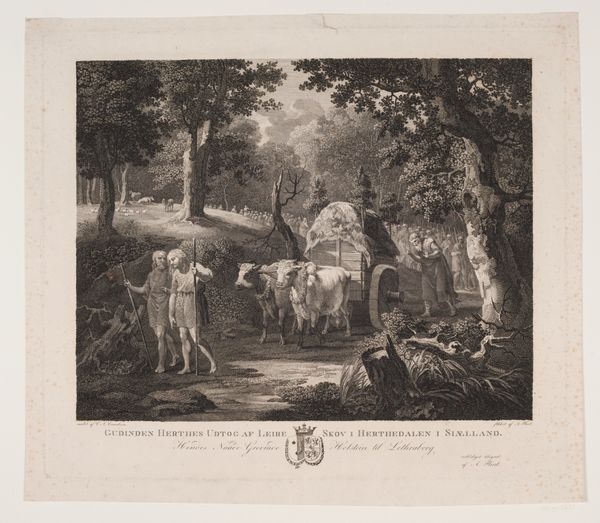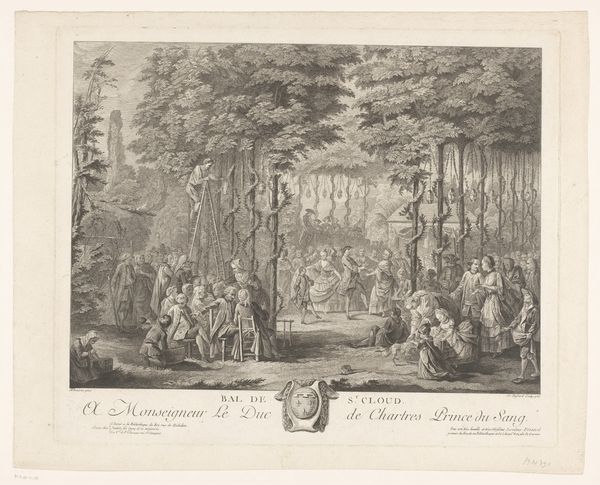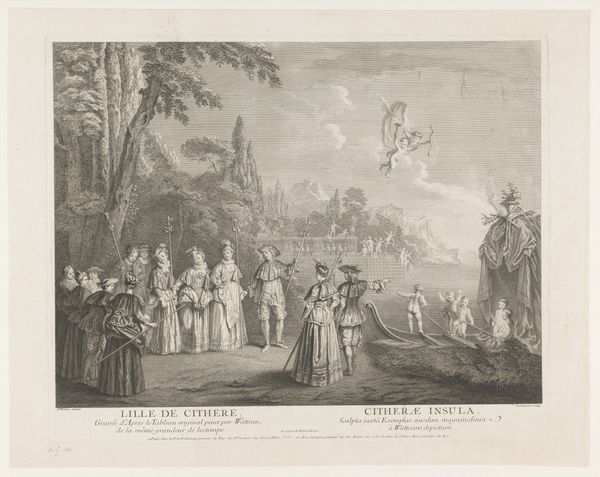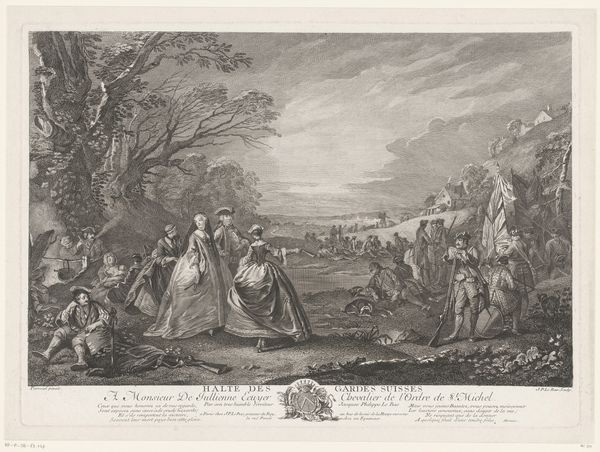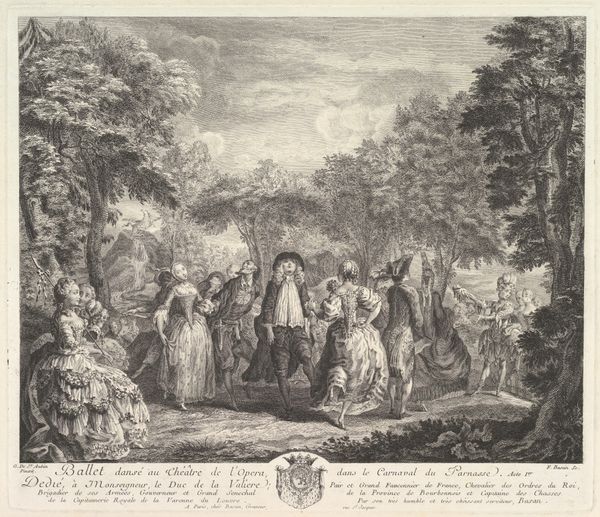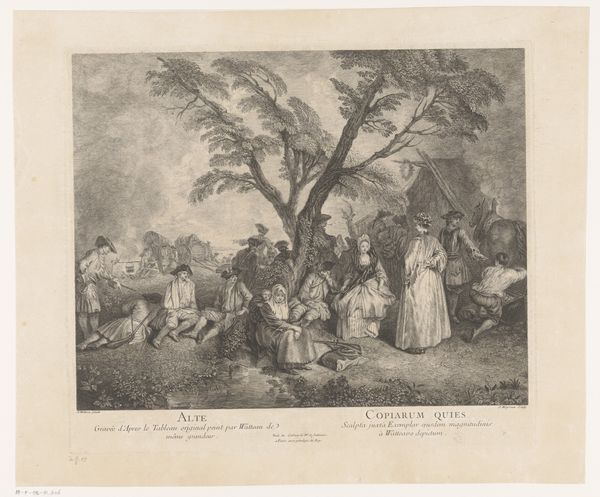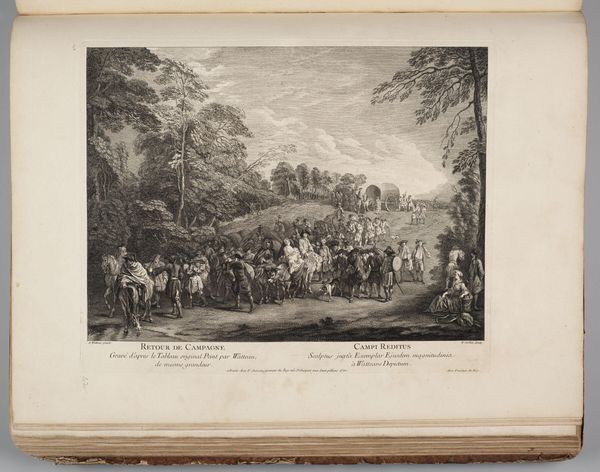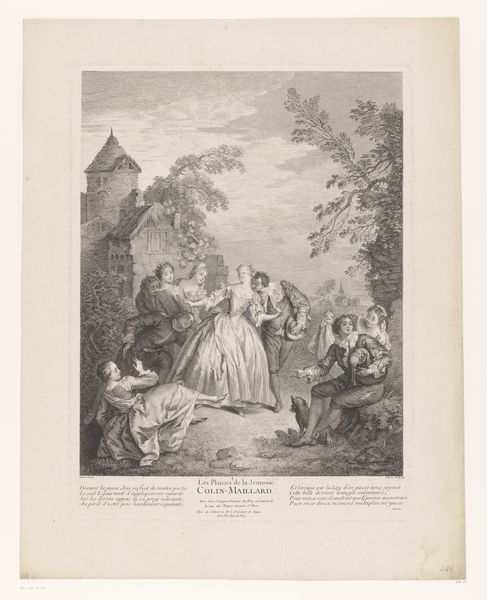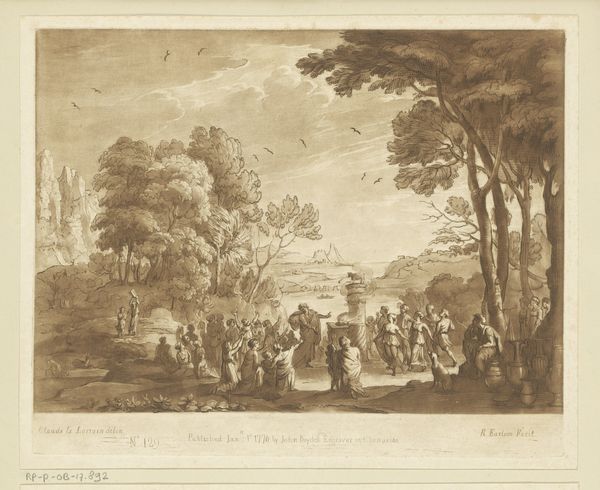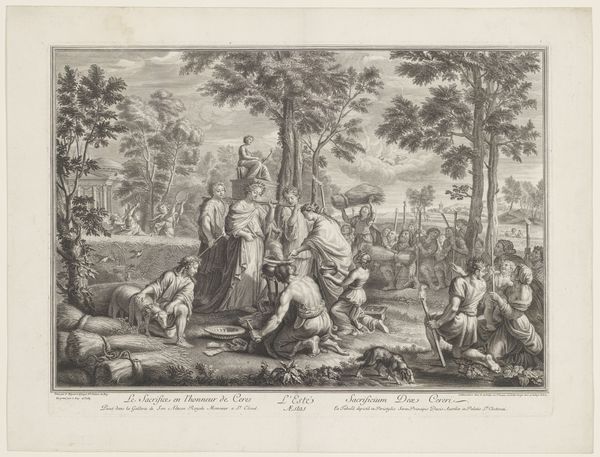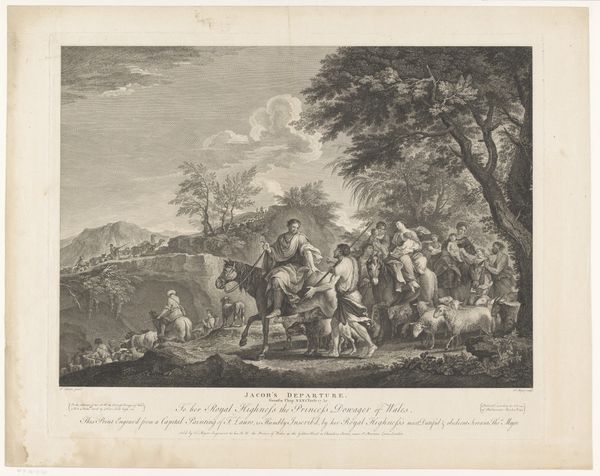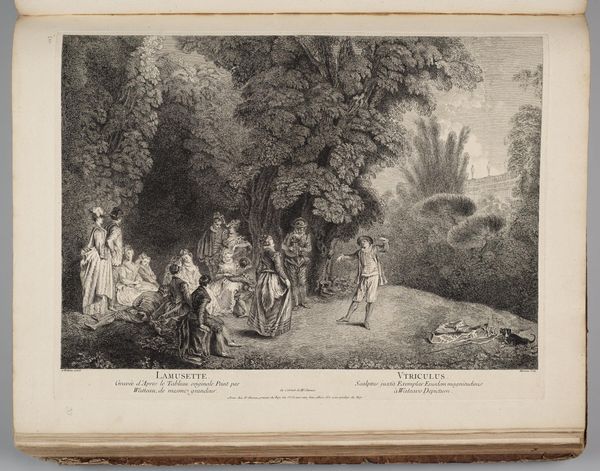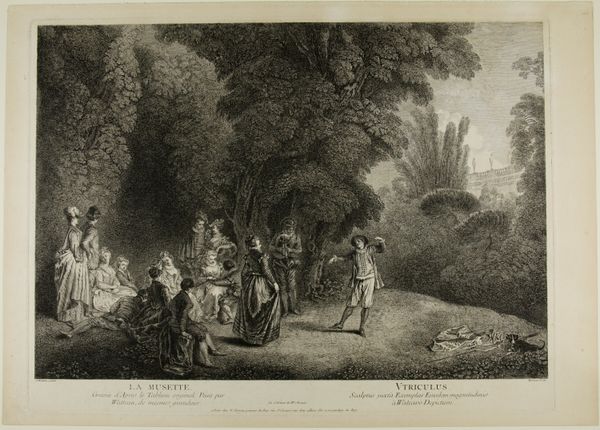
print, engraving
#
baroque
# print
#
landscape
#
figuration
#
genre-painting
#
engraving
Dimensions: height 547 mm, width 738 mm
Copyright: Rijks Museum: Open Domain
Editor: This is "Markt in het dorp," a print by Nicolas de Larmessin III, created sometime between 1650 and 1725. The scene is a bustling village market, but there’s a formality to the figures; they don't feel entirely 'of' the village. What jumps out at you when you look at this piece? Curator: What resonates with me immediately is the composition itself, this theatrical layering. Note how the architecture, almost looming, provides a backdrop – suggesting a rootedness, history weighing down this festive scene. But the figures? They feel almost staged. The symbols point to an interesting tension. What societal rituals might the artist be hinting at here, embedding themselves within a larger, unchanging structure? Editor: I hadn't thought of it as staged, but now that you mention it, they do seem posed, even the dog looks statuesque! Do you think that stiffness has a symbolic function? Curator: Precisely! Dogs, historically, symbolize fidelity, but its stiffness here? It questions that ideal. The seemingly joyous market could be masking anxieties about social harmony. The composition – the separation of the background and the performative foreground – hints at underlying constraints shaping these communal interactions. The artist might be showing us how carefully staged and upheld society and "community" really are, rather than letting the print wash over us as simply charming. Editor: That's a great point. I assumed it was just a genre scene, depicting everyday life, but it’s so much more layered than that. Curator: Visual memory is deceptive; it requires deeper analysis to peel back the surface. These symbols act as coded language from a specific time, holding more profound reflections on the era’s psychology and power dynamics. Editor: I'll definitely look at genre paintings differently from now on! Thank you for pointing out the symbols!
Comments
No comments
Be the first to comment and join the conversation on the ultimate creative platform.
